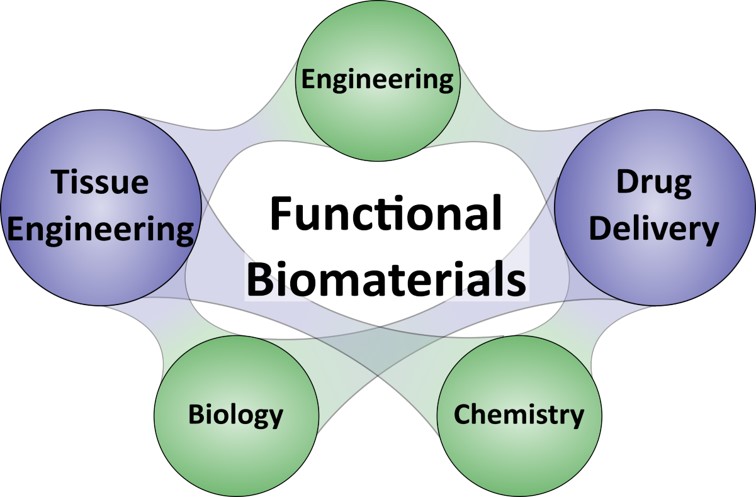 Biomaterials
Biomaterials
We are interested in developing novel biomaterial systems to address limitations in tissue engineering and drug delivery. A variety of biopolymers are being used as the backbone material. These biopolymers are amenable to many aqueous-based chemical modification strategies to increase their functionality. The focus is on rational design of chemically-modified biopolymers to direct cellular fates or tune drug release with details given below for each application.
Drug Delivery
Many oncology drugs are dose limited due to secondary toxicities. Additionally, therapies targeted at activating the immune system often result in substantial over-activation which may be necessary for the therapy to be effective but also puts patients into life threaten situations. Therefore, we are developing focal drug delivery systems for oncology therapeutics as an enhanced delivery option. These systems are designed to slowly release the drug payload over days to weeks to months in order increase their efficacy while still allowing for low systemic exposure.
In Vitro Disease Models
Many drugs that are found to be effective in early screening experiments fail during animal testing and even more fail during early- and late-stage clinical trials. To better predict drug efficacy and off target effects, complex in vitro models of healthy and diseased tissues are necessary for better drug validation prior to expensive animal testing and clinical trials. Our lab is interested in developing three-dimensional, multicellular human cancer models that mimic the in vivo cellularity and microenvironments of tumors. Utilizing a biomaterials scaffold and perfusion bioreactor approaches will allow us to engineering bulk, three-dimensionally tumor models on the millimeter size scale.
Tissue Regeneration
There remains a significant need for organ replacement therapies when organs are damaged, or degenerated due to age. Utilizing similar principles as our In Vitro Disease Models, we are engineering micro-tissues to replace damaged tissues. To further enhance the regenerative potential of the biomaterial scaffolding approach, delivery of peptides, growth factors and small molecules is being explored that direct cell fates or enhance native tissue regeneration.

